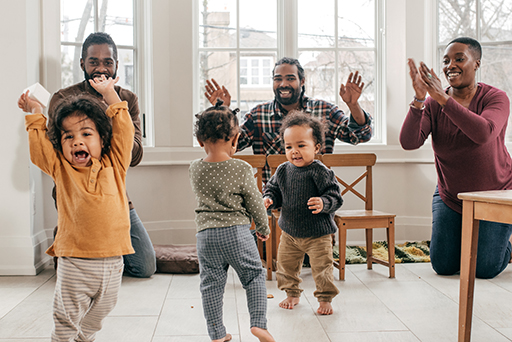6.3 Music, rhythm, dance and movement
One simple way to encourage movement is to play some music. Children naturally tune-in to rhythm and respond with movement that corresponds to the beat.

Children’s spontaneous dance moves express the feeling and emotion evoked by the music, and often involve repetitive action. Similarly, nursery rhymes and songs with actions, such as ‘Incy Wincy Spider’, ‘One Finger, One Thumb, Keep Moving’ or ‘The Wheels on the Bus’, encourage a broad range of gross motor and fine motor movements as well as language and communication and social and emotional development.
Musical games involving ‘start/stop’ such as ‘musical statues’ encourage young children to control their movement in response to sound. For toddlers and young children, stopping moving can take as much physical control as starting to move! These games also promote listening skills.
